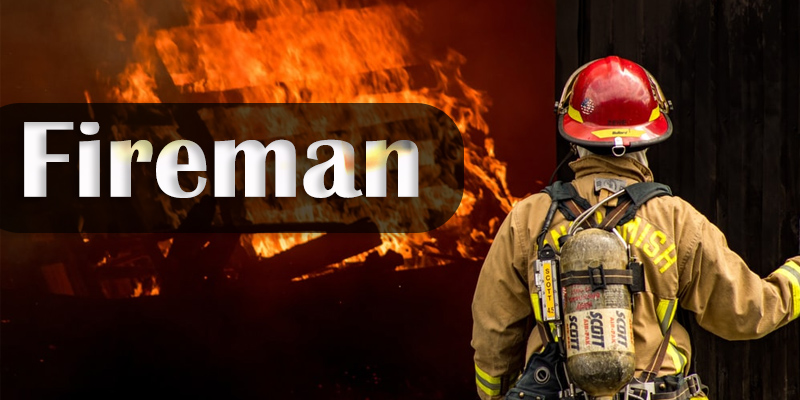
ITI Firemen Trade Syllabus
The ITI "Firemen" trade is a one-year vocational training program under the Craftsman Training Scheme (CTS), governed by the National Council for Vocational Training (NCVT). This course equips trainees with skills in firefighting operations, fire prevention, and rescue techniques to handle emergencies effectively. The syllabus integrates theoretical knowledge, practical firefighting skills, and employability training to prepare students for roles as firemen in fire brigades, industrial units, municipal corporations, or private safety organizations.
Course Overview
- Duration: 1 year (2 semesters, each 6 months)
- NSQF Level: Level 4
- Eligibility: Minimum 10th grade pass (or equivalent)
- Objective: To train individuals in firefighting, rescue operations, and fire safety to ensure public and industrial safety during emergencies.
Detailed Syllabus Breakdown
1. Trade Theory (Theoretical Knowledge)
Covers foundational concepts in firefighting and emergency response.
- Semester 1
- Introduction to Firefighting
- Role and responsibilities of a fireman.
- Types of fires: Class A, B, C, D, E, and their causes.
- Fire science: fire triangle (fuel, oxygen, heat), combustion process.
- Firefighting Equipment
- Fire extinguishers: water, foam, CO2, dry powder – types and uses.
- Fire hoses, nozzles, hydrants: construction, operation, maintenance.
- Personal protective equipment (PPE): fire suits, helmets, breathing apparatus.
- Fire Prevention
- Common fire hazards: electrical, chemical, gas leaks.
- Fire prevention methods: housekeeping, safe storage, electrical safety.
- Fire detection systems: smoke detectors, heat sensors, alarms.
- Basic Rescue Techniques
- Rescue tools: ladders, ropes, cutters, spreaders.
- First aid basics: burns, smoke inhalation, CPR.
- Evacuation principles: crowd control, safe exit routes.
- Safety and Regulations
- Personal safety: PPE usage, safe handling of equipment.
- Fire safety rules: National Fire Service guidelines, local laws.
- Team coordination during firefighting operations.
- Introduction to Firefighting
- Semester 2
- Advanced Firefighting Techniques
- Handling large-scale fires: industrial, residential, forest fires.
- Fire suppression systems: sprinklers, foam, gas-based systems.
- Use of breathing apparatus in smoke-filled environments.
- Rescue Operations
- Rescue from heights: ladder operations, rope rescue.
- Confined space rescue: techniques and safety precautions.
- Vehicle extrication: tools and methods for trapped victims.
- Emergency Response
- Emergency planning: evacuation drills, assembly points.
- Handling hazardous materials: flammable liquids, gases, chemicals.
- Coordination with police, medical teams, and disaster management units.
- Physical Fitness and Discipline
- Importance of physical stamina and agility in firefighting.
- Fireman drills: hose running, ladder climbing, equipment carrying.
- Discipline and teamwork in high-pressure situations.
- Professional Skills
- Communication during emergencies: radio use, clear instructions.
- Reporting incidents: documentation, log keeping.
- Career paths: fire services, industrial safety, training roles.
- Advanced Firefighting Techniques
2. Trade Practical (Hands-On Skills)
Focuses on practical firefighting and rescue skills.
- Semester 1
- Equipment Handling
- Operating fire extinguishers: water, CO2, foam on mock fires.
- Connecting and using fire hoses: rolling, unrolling, pressure control.
- Wearing and testing PPE: breathing apparatus, fire-resistant gear.
- Firefighting Practice
- Extinguishing small fires: Class A, B, C scenarios.
- Conducting evacuation drills: guiding people to safety.
- Using ladders and ropes for basic rescue operations.
- First Aid Training
- Practicing CPR, bandaging, and burn treatment.
- Handling smoke inhalation cases in simulated environments.
- Using first aid kits effectively during emergencies.
- Project Work
- Preparing a fire hazard inspection checklist for a building.
- Documenting equipment usage and maintenance procedures.
- Equipment Handling
- Semester 2
- Advanced Firefighting
- Operating fire pumps and hydrants in large-scale fire drills.
- Using foam and gas-based suppression systems on mock fires.
- Navigating smoke-filled areas with breathing apparatus.
- Rescue Operations
- Performing ladder rescues from heights in simulated scenarios.
- Conducting confined space rescue with ropes and harnesses.
- Practicing vehicle extrication using hydraulic tools.
- Emergency Drills
- Leading evacuation drills for a group of people.
- Managing hazardous material spills: containment and cleanup.
- Coordinating mock emergency responses with team members.
- Project Work
- Executing a full firefighting and rescue simulation.
- Preparing a detailed report on an emergency response drill.
- Advanced Firefighting
3. Workshop Calculation and Science
Provides mathematical and scientific support for firefighting tasks.
- Semester 1
- Arithmetic: calculating water flow rates, extinguisher coverage.
- Physics: heat, pressure, and combustion principles.
- Measurements: hose length, fire spread estimation.
- Semester 2
- Calculations: ladder angles, rescue load capacity.
- Chemistry: properties of fire fuels, extinguishing agents.
- Science: smoke behavior, oxygen levels in fire zones.
4. Engineering Drawing
Focuses on technical drawing for firefighting setups.
- Semester 1: Sketching layouts of fire equipment and evacuation routes.
- Semester 2: Preparing diagrams for firefighting and rescue operations.
5. Employability Skills
Enhances job readiness and soft skills.
- Semester 1
- Communication skills: giving clear instructions during drills.
- Time management: responding quickly in emergencies.
- Basic IT skills: recording incident details.
- Semester 2
- Teamwork: collaborating in firefighting and rescue operations.
- Discipline: maintaining composure under pressure.
- Interview preparation: roles in fire services.
Assessment and Certification
- Examinations: Conducted semester-wise with theoretical and practical components.
- Certification: Successful candidates receive the National Trade Certificate (NTC) from NCVT, recognized nationally and internationally.
- Evaluation: Based on firefighting proficiency, rescue skills, theoretical knowledge, and project work.
Career Opportunities
- Employment: Fireman in municipal fire brigades, industrial units, airports, or private firms.
- Self-Employment: Fire safety trainer or consultant.
- Further Studies: Diploma in Fire Technology, Industrial Safety Management.
Note
- This syllabus aligns with the latest NCVT guidelines and may vary slightly based on institutional or state-specific requirements.
- For the most current version, refer to the Directorate General of Training (DGT) website (dgt.gov.in) or consult your local ITI.
Trade Type
- 14 views